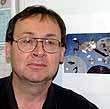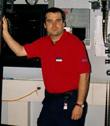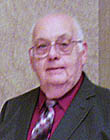|
|
This topic comprises 3 pages: 1 2 3
|
|
Author
|
Topic: Speaker wire gauge
|
|
|
|
|
|
|
|
|
|
|
Don E. Nelson
Expert Film Handler

Posts: 138
From: Brentwood, CA, USA
Registered: Nov 2001
|
 posted 01-15-2003 03:20 PM
posted 01-15-2003 03:20 PM




Tom,
In order to ensure the best possible sound out of your theatre sound system, I would recommend you research this speaker wire subject throughly before buying just any old gauge of speaker wire from the local hdwe. store. Years ago, (1974) my roommate at the time realized that interfacing the amplifier to the speaker system on any type of sound system was the most overlooked component. He researched the cable industry and did some electronic/physics research and started buying samples of specially produced wire from Japan. From this humble begining ,he started a company called The Monster Cable Co in San Francisco. He is now the "head monster", and his name is Noel Lee.
It is critical that the signal from the amplifier to the speaker system is not limited in any way by the connection wire. That is why a lot of concert sound companies do away with speaker wire completely by physically locating the amps aon back of the sound cabinets. (directly coupled)
To make a long story, not quite so long,
Noel found that there are three basic electrical properties which combine to form the total impedance of a wire: resistance, capacitance, and inductance . The capacitance effects the high frequencies that travel on the outside of the wire. Resistance (resistive impedance, measured in Ohms) is usually not a problem, even with inexpensive electrical cables. The real culprits in cable transmission are capacitance, measured in picofarads ) per foot, and inductance, measured in microhenrys (ÁH).
The damping control of the amp is critical to controling the speaker cone movement accurately. The types of wire connectors you use at both ends are also critical.
Now this may sound like info that only an audiophile, with a high end system, has to worry about t but if you don't think of you theatre sound sytem as a really good stereo system, your in big trouble and it will just sound like a PA. system . I believe something as simple as speaker wire is the reason some theaters sound "great " with good stereo imaging, presence and dynamic range while others are just (ho hum)average. Best of luck.
| IP: Logged
|
|
|
|
|
|
|
|
|
|
|
|
|
|
|
|
|
|
Mark Gulbrandsen
Resident Trollmaster

Posts: 16657
From: Music City
Registered: Jun 99
|
 posted 01-17-2003 08:19 PM
posted 01-17-2003 08:19 PM




Gord said,
"Specialty speaker cables are vastly overated"
___________________________________________________________________
Sorry Gord,
You're a bit off with that statement. First, you have to have quipment with high enough resolution before you can hear the differences. Few, if any theatres, or dubbing stages fall into the high resolution catagory. There are alot of things that affect how a cable sounds, some of these differences can even be measured, and some cannot. Capacitance plays a big factor, how much resistance, and how much reactance the cables introduce will also cause differences in overall sound. Moleculuar structuire of the copper, or what ever metal is another big factor. Different amplifiers and different speakers all behave differently with differing amount of capacitance, reactance and resistance....ya can't deny that!
Just don't expect to be able to hear huge differences, usually they are slight. Another thing that does have effect on sound is the braid of the conductors, and how the cable is braded together. There is alot more to it but these are just some of the reasons. If ya want to know more research it........
Mark @ CLACO
www.clacoequipment.com
| IP: Logged
|
|
|
|
All times are Central (GMT -6:00)
|
This topic comprises 3 pages: 1 2 3
|
Powered by Infopop Corporation
UBB.classicTM
6.3.1.2
The Film-Tech Forums are designed for various members related to the cinema industry to express their opinions, viewpoints and testimonials on various products, services and events based upon speculation, personal knowledge and factual information through use, therefore all views represented here allow no liability upon the publishers of this web site and the owners of said views assume no liability for any ill will resulting from these postings. The posts made here are for educational as well as entertainment purposes and as such anyone viewing this portion of the website must accept these views as statements of the author of that opinion
and agrees to release the authors from any and all liability.
|

 Home
Home
 Products
Products
 Store
Store
 Forum
Forum
 Warehouse
Warehouse
 Contact Us
Contact Us




 Printer-friendly view of this topic
Printer-friendly view of this topic












![[Eek!]](eek.gif) . Use an eyebolt in the drill and have a seciond person keep some back tension on the rolls of wire, or you'll tangle!. Use stranded wire, THHN insulated(double insulated). Stranded is lots easier to work with and sounds much, much better than solid because of skin effect.
. Use an eyebolt in the drill and have a seciond person keep some back tension on the rolls of wire, or you'll tangle!. Use stranded wire, THHN insulated(double insulated). Stranded is lots easier to work with and sounds much, much better than solid because of skin effect.


![[Roll Eyes]](rolleyes.gif)






